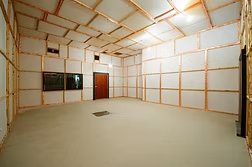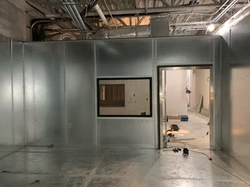Epson Printer Won’t Connect to WiFi? Step-by-Step Fixes Inside
Table of Contents
ToggleIf your Epson printer won’t connect to WiFi, it can be a frustrating experience, especially when you’re relying on wireless printing for convenience. However, this issue is quite common and usually easy to fix with a few straightforward steps. First, check your WiFi connection to ensure it’s working properly.
You can do this by connecting another device, such as a smartphone or laptop, to the same network. If the internet is down or unstable, that could be why your printer can’t establish a connection. Restarting your router and modem often helps refresh the network and restore connectivity.
║ 👉👉👉 Live Chat With Us For Epson Support 👈👈👈 ║
Once your internet is confirmed to be working, turn off your printer, unplug it for a minute, then power it back on. This can clear minor bugs that may be interfering with the WiFi setup. Next, make sure your printer is within range of your wireless router. A weak or interrupted signal can prevent the printer from staying connected. Try moving the printer closer to the router and remove any objects or devices that might be causing interference, such as cordless phones, microwaves, or thick walls.
Also, double-check that your WiFi network name (SSID) and password are correct. If you recently changed your network credentials, the printer won’t be able to reconnect automatically. Use the printer’s control panel to re-enter the WiFi settings manually. Navigate to the wireless setup section and follow the on-screen instructions to select your network and enter the correct password. Many Epson printers offer a WPS (WiFi Protected Setup) feature for easier connection. If your router supports WPS, press the WPS button on the router, then select the WPS option on the printer to connect automatically without entering a password. Another reason your Epson printer may not connect is outdated firmware or drivers.
Out-of-date software can cause compatibility issues with your operating system or network configuration. Make sure your printer drivers and firmware are updated by checking the software update utility installed on your computer or accessing the printer’s settings menu. If the printer is still not connecting, reset the network settings on the printer to default.
║ 👉👉👉 Live Chat With Us For Epson Support 👈👈👈 ║
This option can usually be found in the printer’s wireless settings menu. After the reset, go through the setup process again as if you’re connecting the printer for the first time. For users connecting via a dual-band router, ensure that the printer is set to connect to the 2.4GHz band, as many Epson models do not support 5GHz WiFi networks.
Switching to the correct band can immediately resolve the connectivity issue. You should also ensure your network does not have any restrictions or MAC address filtering enabled, which might prevent new devices from connecting. Check your router settings or consult your internet service provider for assistance. If you’re using a static IP address for your printer, try switching to dynamic IP or vice versa to see if it helps. Lastly, if nothing else works, consider reinstalling the printer on your computer or mobile device.
Remove the printer from the list of connected devices and then add it back using the WiFi setup procedure. This can help clear out any incorrect configurations that might be blocking the connection. In summary, when an Epson printer fails to connect to WiFi, the solution often lies in checking the network, restarting devices, ensuring proper configuration, updating firmware, and avoiding interference. With careful troubleshooting and attention to the setup process, you can get your Epson printer back online and enjoy seamless wireless printing once again.
- Arts & Style (100)
- Automobile (287)
- Business (5,716)
- Business and Entrepreneurship (166)
- Career Development (55)
- Climate & Environment (26)
- Creative (34)
- Culture (1,561)
- Beauty (284)
- Skincare (243)
- Cultural Studies (75)
- Digital Life (73)
- Energy Healing (31)
- Fashion (1,039)
- Clothing (697)
- Fashion Design (234)
- Philosophy (7)
- Morality (6)
- Religion (17)
- Sports (116)
- Beauty (284)
- Digital Marketing (344)
- DIY and Crafts (15)
- Economics (8)
- Education (1,282)
- Entertainment (198)
- Faith & Spiritual (10)
- Fashion and Beauty (155)
- Finance and Money Management (211)
- Fitness and Exercise (32)
- Food and Drink (171)
- Game (142)
- Health and Wellness (1,098)
- Home and Garden (389)
- Law (143)
- Lifestyle (1,381)
- Health (685)
- Home (389)
- Architecture (99)
- Interior Design (216)
- Rental Property (27)
- Pets (76)
- Relationships (70)
- Restaurants (19)
- Literature (7)
- Media (272)
- Packaging (41)
- Politics (1)
- Real Estate (257)
- Science and Nature (14)
- SEO (141)
- Social Media Marketing (51)
- Software Development (225)
- Sports and Fitness (44)
- Technology (851)
- Artificial Intelligence (239)
- Blockchain (61)
- Data Science (114)
- Gadgets (144)
- Security (141)
- Transportation (111)
- Travel & Tourism (759)
- Uncategorized (1,985)
- World (62)
- International (59)
- Everything You Need to Know About Professional Turf Installation in Croydon

- (no title)
- How the Ben Spies Racing Suit Jacket Combines Track Engineering with Street Comfort
- QuickBooks Payroll Not Working? Fix QuickBooks Error 3007 & Error 6138 105 – Call +1-(855)-955-1942 for Expert Help

- How Medical Billing and Coding Outsourcing Reduces Overhead Costs


MRI Shielding Companies | Innovative Shielding for Hospitals

RF Shielded Enclosure Innovative Shielding for Industry Equipment

Bonzai.pro: the tool created by Jean Marie Cordaro to bring creators closer to their audience

Q1 Journals – Leading Journals for Research, Science

Get in Touch with us at Epson Printer USA - Contact Us

Epson Printer Won’t Connect to WiFi? Step-by-Step Fixes Inside

Download and Install Epson ScanSmart Software – Complete Guide
